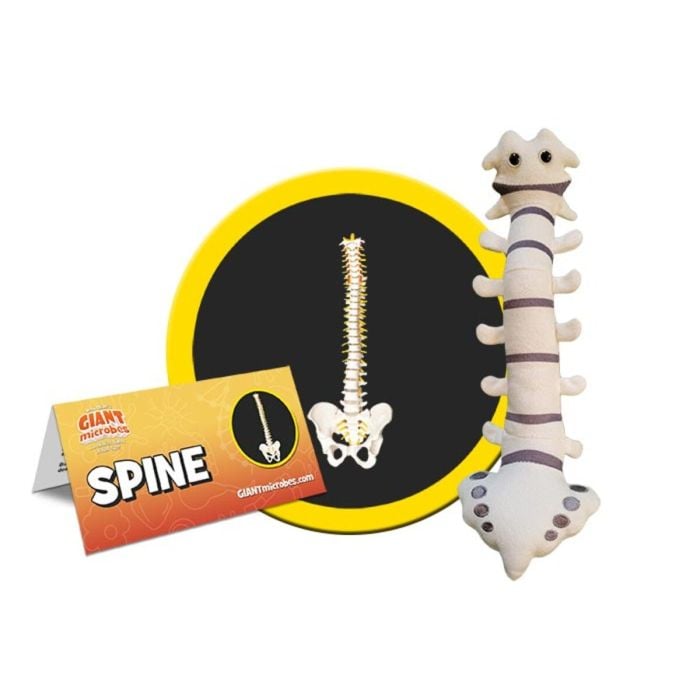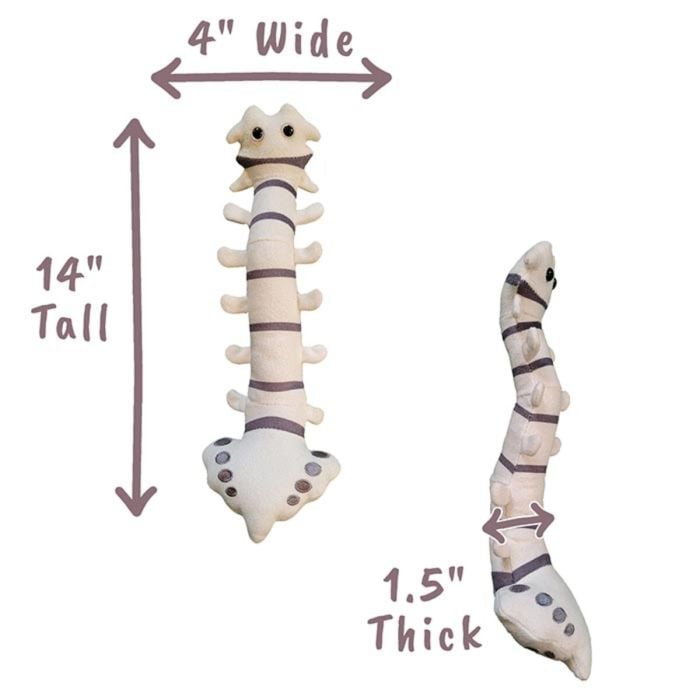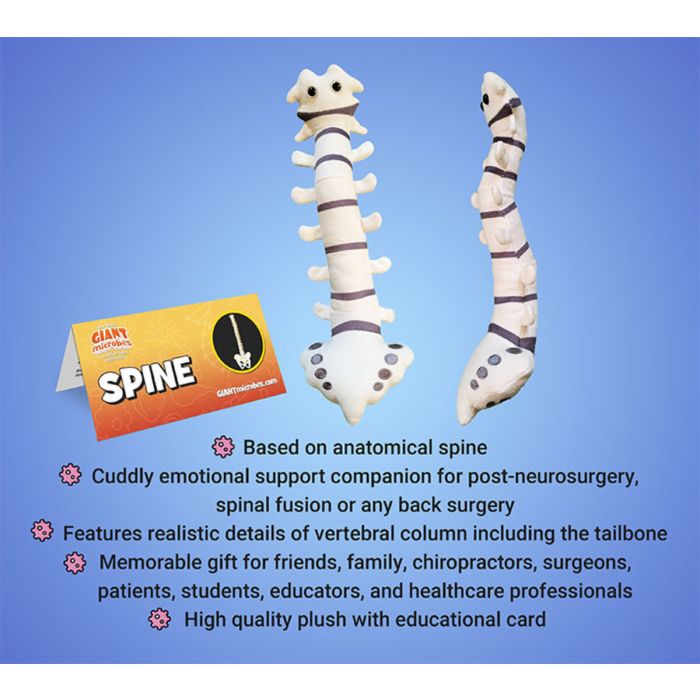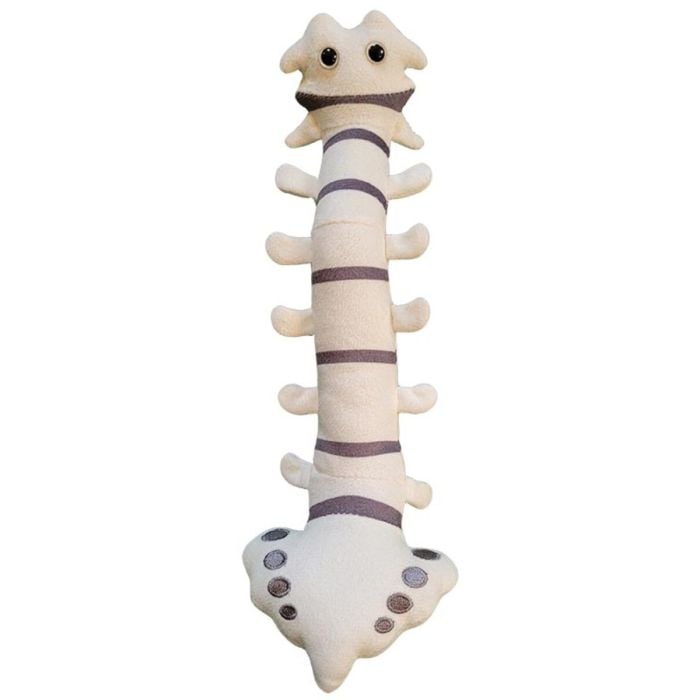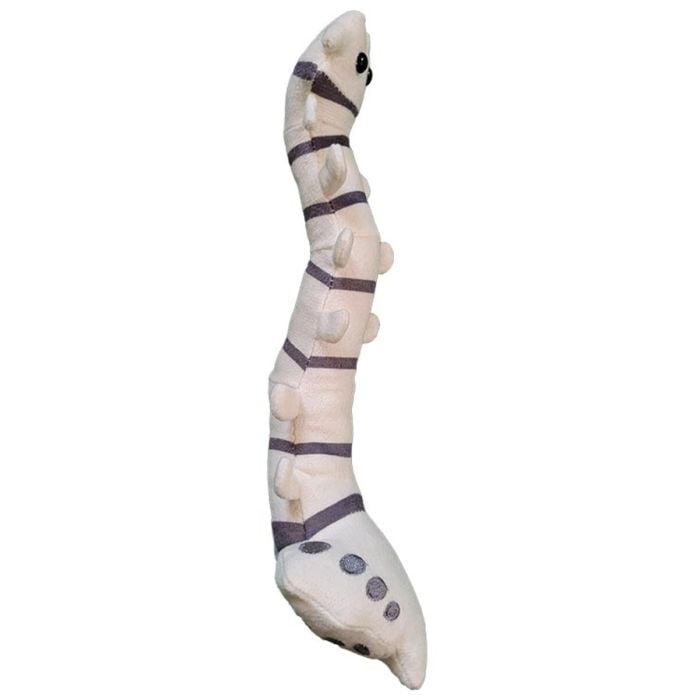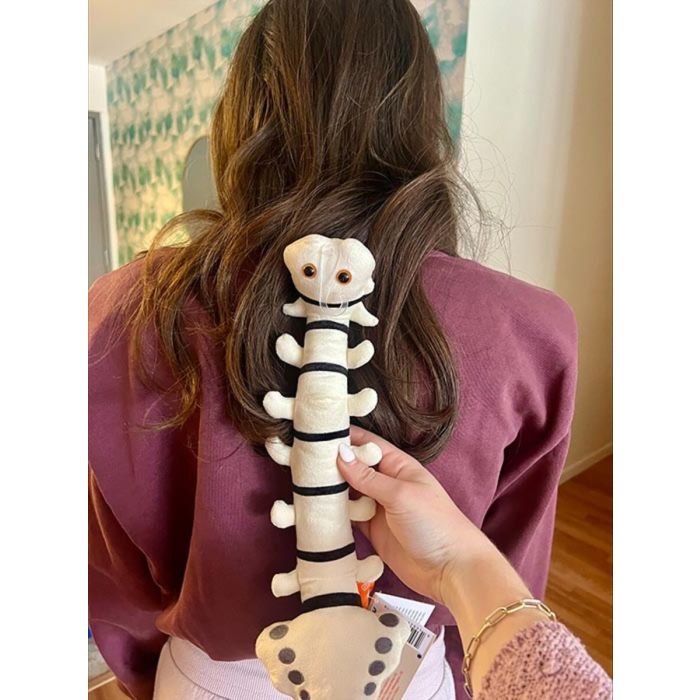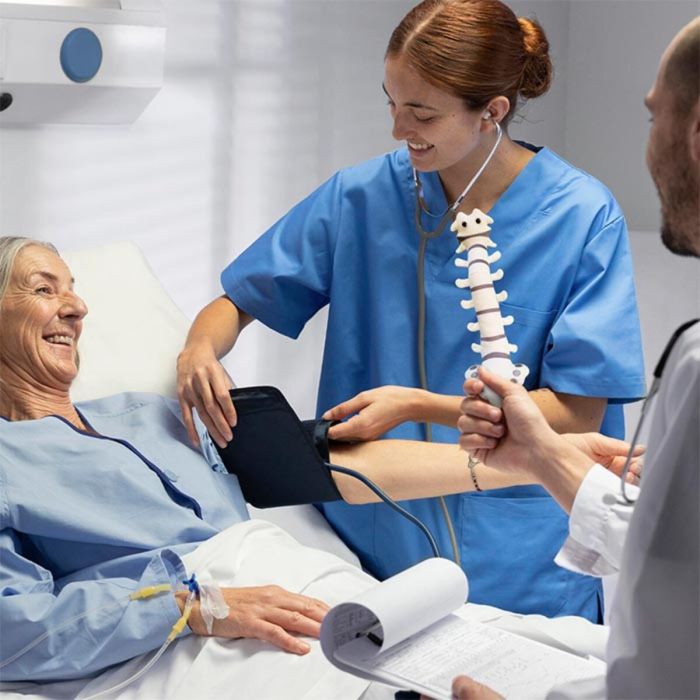Spine
GIANTmicrobes plush Spine features 7 vertebrae representing the vertebral column with dark grey discs in between. At the bottom is the sacrum and coccyx, or tailbone, with detailed grey embroidery.
So stand up straight and look out for your spine - your biggest supporter! This bony column of disk-shaped vertebrae has two main functions, protecting the delicate spinal cord and supporting the skeleton.
Size: 14 x 4 x 1.5"
Product Details
Additional Information
| Sizes | Giantmicrobes are based on actual microbes, cells, organisms and other critters, only 1,000,000 times actual size! Gigantic (GG) 16-24" XL (XL) 10-15" Original (PD) 5-8" Keychain (KC) 2-4" with clip |
|---|---|
| Materials | Plush from all new materials. Stuffed with polyester fiber fill. Surface washable: sponge with water & soap, air dry. |
| Packaging | Each plush microbe includes a printed card with fun, educational and fascinating facts about the actual microbe or cell. |
| Safety | Every product meets or exceeds U.S. and European standards for safety. For ages 3 and up. |
All about Spine
FACTS: Stand up straight and look out for your spine, your biggest supporter. This bony column of disk-shaped vertebrae has two main functions, protecting the delicate spinal cord and supporting the skeleton. Most people are born with 33 vertebrae. By adulthood you have 24 since several vertebrae fuse together as you grow. Five vertebral sections make up the spine: cervical, thoracic, lumbar, sacral and coccygeal. Each section has its own role to play. The 5 cervical vertebrae support your head, and include the specialized atlas and the axis. The atlas rotates around a peg on the axis, allowing the skull to move freely up and down and side to side. The 12 thoracic vertebrae support your chest and organs, while the 5 lumbar vertebrae support the weight of your body. The large triangular structure at the bottom is the sacrum, connecting your spine to your hip bones and pelvic floor. At the end is the coccyx, or tailbone.
Your spine is there to back you up each day. But it can also be a pain in the back. You are not alone if you suffer from back pain with up to 80% of the population facing at least one episode. The physical pain people suffer involves the complex system of nerves, muscles, tendons, cartilage, joints and bones. Causes of back pain include arthritis, overwork, poor posture, strains and mistreatment of your spine. The result is often a bulging spinal disc.
Vertebrae are separated by flexible discs filled with a soft, jelly-like substance that provides cushioning and balance to the spine. When the harder “skin” of the disc is torn in an accident or by abrasion, the inner disc “jelly” pushes the skin of the disc outward. In a ruptured or herniated disc, this jelly leaks out. In such extreme cases the discs are no longer cushioned and the jelly can cause inflammation and pain to the nerves. Hopefully, the next-generation of therapies will bring better relief to those who suffer back pain. Overall, it is good to know your spine has got your back.









